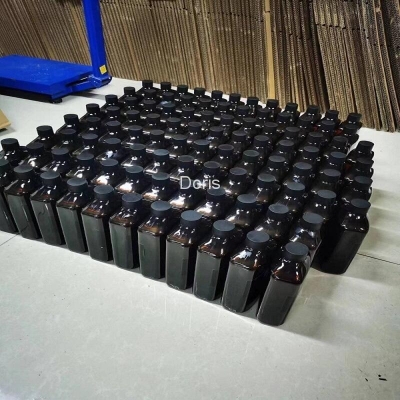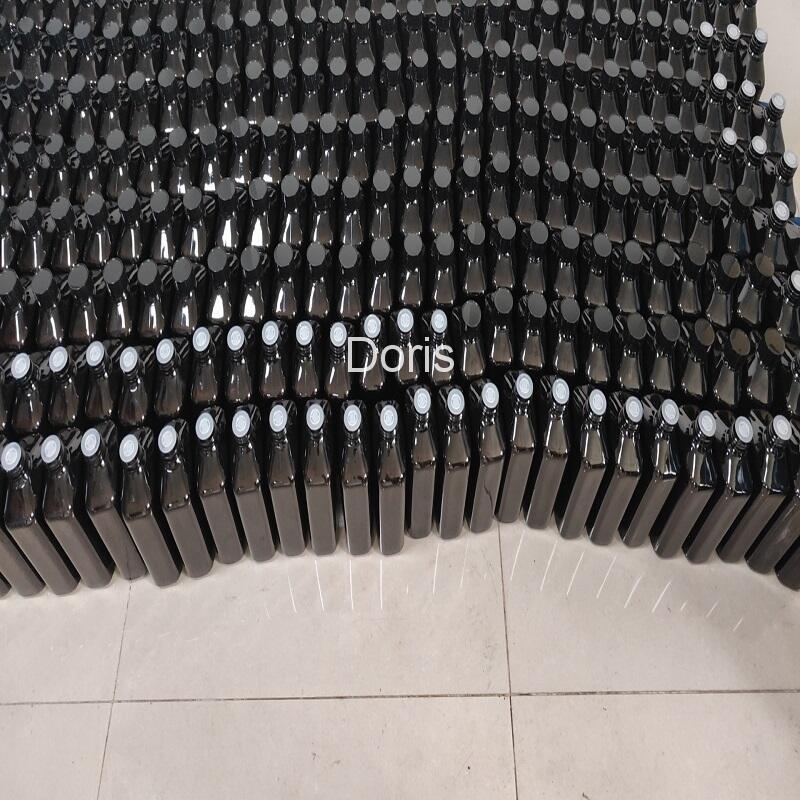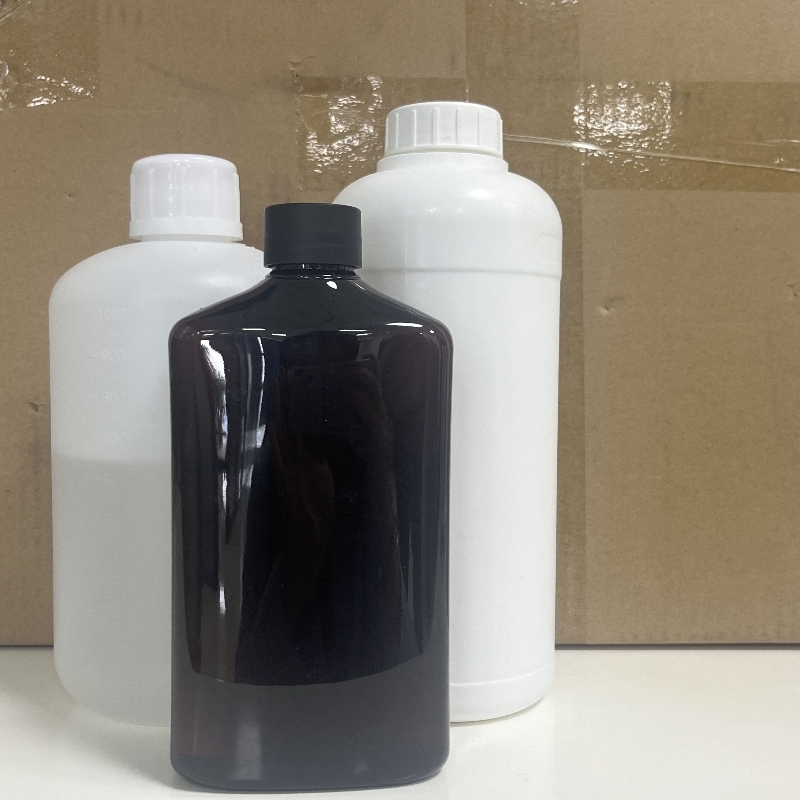-
Categories
-
Pharmaceutical Intermediates
-
Active Pharmaceutical Ingredients
-
Food Additives
- Industrial Coatings
- Agrochemicals
- Dyes and Pigments
- Surfactant
- Flavors and Fragrances
- Chemical Reagents
- Catalyst and Auxiliary
- Natural Products
- Inorganic Chemistry
-
Organic Chemistry
-
Biochemical Engineering
- Analytical Chemistry
- Cosmetic Ingredient
-
Pharmaceutical Intermediates
Promotion
ECHEMI Mall
Wholesale
Weekly Price
Exhibition
News
-
Trade Service
Recently, the U.
S.
government once again targeted China's biomanufacturing, signing a U.
S.
biotechnology and manufacturing executive order aimed at strengthening U.
S.
supply chains and reducing dependence on Chinese companies, and then launching the National Biotechnology and Biomanufacturing Program
.
This is another targeted measure
to suppress China following the recent chip bill.
Previously, the White House passed the "Chip and Science Act", the main purpose is to provide huge subsidies for the domestic chip industry in the United States, vigorously develop the US chip industry, and enhance global competitiveness
.
Judging from a series of major moves by the US government, in the face of the gradual loss of its global hegemonic position, the United States is eager to suppress all rising countries that threaten its status by any means through scientific and technological leadership, especially in the field of computer, biology and other "stuck neck" technologies, in an attempt to stifle the development of
other countries.
As a cutting-edge interdisciplinary discipline, biochips have naturally become a heavyweight in the game of big powers
.
Written by Nancy
In the eighties of the twentieth century, the term biochip was first born, mainly referring to the micro-biochemical analysis system built on the surface of solid chip through microprocessing technology and microelectronics technology to achieve accurate, rapid and large-information detection
of cells, proteins, DNA and other biological components.
Biochips in the narrow sense refer to the integration of biomolecules (oligonucleotides, cDNA, genomics) by different methods
DNA, peptides, antibodies, antigens, etc.
) are fixed on the biomolecular lattice formed on solid phase transmitters such as silicon wafers, glass sheets (beads), plastic sheets (beads), gels, nylon membranes, etc.
, so biochip technology is also called microarray technology
.
According to the composition and function classification, biochips can be divided into gene chips, protein chips, cell chips, organ or tissue chips, microfluidics and other microchips
.
At present, gene chip technology is the most mature
.
Biochips, widely used
Biochips, widely usedIn fact, biochips are widely used in various industries in society, because of its fast, high-throughput, low-cost, portable many advantages, biochip technology in drug screening, disease diagnosis (such as new coronavirus detection), judicial identification, individualized treatment, environmental monitoring, food safety, agricultural biology, military engineering and other fields play an important role
.
Fig.
Biochip Applications Source: Public information
In the field of disease diagnosis, the use of gene chips can detect thousands of gene expressions
.
Normal human genomic DNA and DNA chip hybridization to obtain standard maps, and then compared with the patient's genomic DNA profile, the lesion gene can be obtained, providing a basis
for genetic diagnosis.
At present, POCT in IVD uses biochip technology, patient-derived biological samples include saliva, oral epithelial cells, plasma, etc.
, and the detection targets cover bacteria, fungi, viruses and other pathogens, and not only genetic testing, biochemical markers, cytokines, proteins, peptides can be detected, providing a new platform
for a large number of disease diagnosis.
In the field of drug screening, gene chips can be used to analyze the differences
in gene expression in different tissues and organs of the body before and after medication.
If the peptide library is obtained in the cDNA expression library to make a peptide chip, substances with pharmacodynamic effects can be screened from many drug components
.
Using RNA, single-stranded DNA is extremely flexible to form a complex spatial structure, which is more favorable to combine with target molecules, the RNA or single-stranded DNA in the nucleic acid library can be fixed on the chip, and then incubated with the target protein to form protein-RNA or protein-DNA complexes, and specific drug proteins or nucleic acids
can also be screened.
Therefore, the combination of chip technology and RNA library is also widely used
in drug screening.
In the field of personalized treatment, the use of gene chip technology can implement individualized precision treatment for patients and guide clinical medication
.
In the treatment, the specific causes of many diseases of the same kind are different from person to person, and the medication should also be different from person to person, and the real right medicine
is required.
For example, in the treatment of breast cancer, patients who are sensitive to chemotherapy are distinguished from those who are not sensitive to chemotherapy through gene expression profiles, and targeted treatment is carried out to find the best treatment drugs and solutions, and ultimately achieve the purpose of
improving efficacy.
The technology is complex and the start is late
The technology is complex and the start is lateThe underlying technology of biochips is analyzed, mainly including micro-nano processing technology, biosensing technology and microfluidic technology
.
Micro-nano processing technology refers to the processing of micro/nano scale parts and parts made into components or systems processing technology, the main steps include thin film preparation (deposition, etching, epitaxial growth, oxidation and doping, etc.
), mask preparation, pattern formation and transfer (gluing, exposure, development), and the most critical step is pattern formation and transfer
.
At present, the most researched pattern formation and transfer technologies include surface sacrificial layer technology, soft etching technology, and technology integrating lithography, electroforming and plastic casting, and different technologies are for materials
of different hardness.
In biosensing, it is also necessary to convert biological information into human-readable signals, that is, physical or chemical information in physiological activities into optical, electrical, and mechanical signals
.
For example, if it needs to be converted to optical signals, methods such as fluorescent labeling and isotopic labeling can be used; Converted into electrical signals, nanopore sequencing and other methods can be used; Converted into a mechanical signal, adsorption can be used to cause microbeam deformation or change of
vibration signal.
Finally, microfluidic technology can be used to realize the manipulation of biological samples in buffer, cell culture and isolation, drug screening and delivery and other disease detection and treatment purposes
.
Microfluidics is a technology for precise control, manipulation and detection of micro-scale fluids with channel sizes ranging from
100 nanometers to hundreds of microns.
At the microscopic scale, gravity and inertia no longer dominate, while surface tension, energy dissipation, and flow resistance will dominate the behavior of
microscopic flows.
Biochip schematic [(a) DNA chip top view; (b) Side view of the microbeam cluster; (c) biological information can be converted into trabecular deformation signals; (d) Bioinformatics can be converted into microbeam vibration signals] Source: Nature Journal
From the above manufacturing principles, the complexity of biochip technology can be seen, the global biochip development is currently in the growth period, has not yet entered the mature period, the future space is huge
.
Since Affymetrix produced the world's first commercial biochip in 1994, the United States still leads the development of global biochip industrialization, accounting for 40% of the global biochip technology patents, in addition, the North American market accounts for about half of the total global biochip market
.
The germination period of biochip technology in Germany and France is relatively short, and the technology digestion and absorption capacity and independent research and development ability are strong, and they are also in a leading position
.
Japan and South Korea in the Asia-Pacific market have entered a period of rapid development since 2016 and have made many important breakthroughs
.
In contrast, although China's biochips have also given birth to a number of representative enterprises, there is still a certain gap
in the technical level compared with developed countries.
Broad prospects, technological breakthroughs
Broad prospects, technological breakthroughsData shows that the global biochip industry grew from $4.
7 billion in 2015 to $18.
4 billion
in 2020.
According to Grand View Research
It is predicted that by 2024, the total value of the global biochip market will reach 25.
8 billion US dollars, of which DNA chips account for about one-third of the total value, and its development momentum mainly comes from genomics and proteomics research and corresponding product development in the process of new drug development
.
According to GIA information, the US biochip market size was $5.
2 billion in 2020, accounting for 40.
1%
of the global market share.
China's biochip market size is about $1.
1 billion, accounting for 8.
4%
of the global market share.
The gap between the two countries is obvious, but it is predicted that China's biochip market will exceed 18 billion yuan in 2025, and the future market capacity is huge
.
Fig.
Global biochip market size (US$ billion) Source: Public information
Around the world, the industry's leading biochip company is Thermo Fisher
Scientific, with fiscal 2021 revenue of $39.
211 billion, acquired Affymetrix, a leading provider of cell and genetic analysis products, in 2016 to strengthen its position
in genetic analysis and life sciences 。 In addition, Agilent
Technologies ($6.
319 billion in fiscal 2021), PerkinElmer ($5.
07 billion in 2021), Illumina ($4.
526 billion in fiscal 2021), Fluidigm
Corporation (2021 revenue of $130 million) is a top company
.
It is worth noting that foreign media reported that there are five overseas start-ups emerging in the field of biochips:
Nidus Biosciences utilizes gas expansion molding (GEM) technology to create microbubble arrays for high-throughput screening of human primary B cells and discovery of new antibody drugs;
Nutcracker Therapeutics' technology platform enables the "push-button" production of mRNA on dedicated disposable biochips and delivery vehicles, through software automation control output of GMP-compliant mRNA drugs;
Dutch Qurin Diagnostics uses a nanotechnology platform to use urine as a liquid biopsy source for early diagnosis, monitoring and treatment of cancer and other medical conditions;
Encapsulate in the United States culture patients' cancer cells in vitro, and then test hundreds of different chemical drugs on cancer cells to screen the most effective personalized treatment plan;
The French company Eden Microfluidics offers MEMS for microfluidics and polymers
Prototyping industrialization solution, using traditional thermal stamping systems, can produce biocompatible microfluidic chips
in as little as 30 minutes.
Compared with foreign innovative technologies, the liquid biochips of local listed companies Oriental Biologics are also worth paying attention to
.
According to the IPO prospectus, its self-developed liquid biochip technology can realize three-dimensional coding of color, intensity and particle size, and achieve up to 150 indicators in one inspection, with higher detection throughput; In terms of detection speed and test repeatability, compared to Luminex, which is currently in a monopoly position
200 products have advanced technology and certain advantages
.
The so-called liquid phase biochip, the basic detection principle is to combine microspheres with flow cytometry, with suspended microspheres as the reaction carrier for liquid phase three-dimensional detection, and high-throughput, rapid detection flow cytometry as the analysis method, and its technical core is polymer microspheres
with coded signals.
In the flow chamber of the flow cytometer, the microspheres are irradiated by two lasers, one laser is used to excite the fluorescence of the microspheres themselves to identify the type of microspheres; Another laser excites the fluorescent reporter molecules bound to the detected substance, and quantifies the detected object by detecting the fluorescence intensity of the fluorescent reporter
molecules.
Compared with solid-state biochips, liquid chip detection is more repeatable, sensitive, more flexible to use, and less
expensive and difficult to prepare.
Fig.
Schematic diagram of liquid biochip Source: Advances in Chemistry
In general, in recent years, China has successively introduced policies to support the development of the biochip industry, compared with developed countries, the domestic biochip industry as a whole is still in its infancy, has not really formed industrialization, and it is expected that more local enterprises with innovative capabilities will emerge in the future and import substitution
will be realized as soon as possible.
Resources:
Resources:
1.
Liquid biochip detection technology based on functional nanomaterials, Wu Weijie, Leng Yuankui, etc.
, Chemical progress, 201812
Liquid biochip detection technology based on functional nanomaterials, Wu Weijie, Leng Yuankui, etc.
, Chemical progress, 201812
2.
A comparative study of the technological development stage of the global biochip industry, Li Yaya, Zhao Yulin, Scientific and technological progress and countermeasures, 201605
A comparative study of the technological development stage of the global biochip industry, Li Yaya, Zhao Yulin, Scientific and technological progress and countermeasures, 201605
3.
Biochip Research Status and Market Analysis, Xiaoqin Zhao, Kaiyun Mao, Technology and Market, 201801
Biochip Research Status and Market Analysis, Xiaoqin Zhao, Kaiyun Mao, Technology and Market, 201801
4.
Biochip Technology and Mechanics, Shouzhi Wang, Nenghui Zhang, Nature Journal, 202208
Biochip Technology and Mechanics, Shouzhi Wang, Nenghui Zhang, Nature Journal, 202208
5.
IPO prospectus of Oriental Biologics
IPO prospectus of Oriental Biologics







